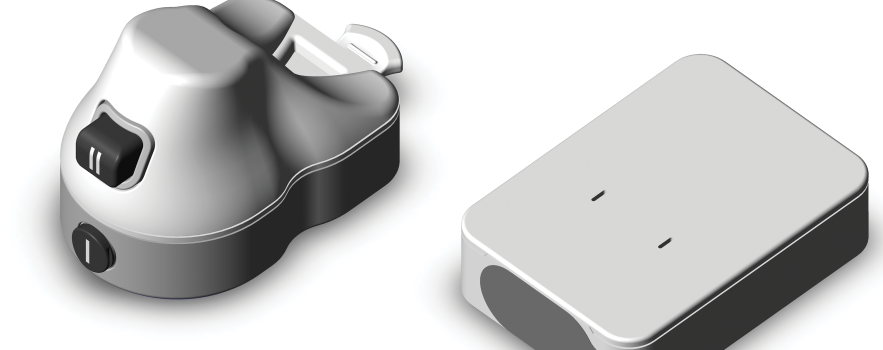The ability to collect a blood sample painlessly from people at home without the need of a healthcare worker visit could transform the way healthcare and health research are conducted. This has been demonstrated by new study results published on 10 May 2022 in the Journal of Telemedicine and Telecare.
Lockdown learning
At the height of the COVID-19 pandemic, researchers at the MRC Epidemiology Unit sought to measure blood samples from participants in the Fenland Study cohort for antibodies to assess a previous COVID-19 infection, and investigate whether it is possible to identify the COVID-19 pre-symptomatic phase using remote measurements of signs and symptoms.
The COVID-19 pandemic has rapidly increased the adoption of “telehealth”, where people communicate online and via the telephone with their healthcare teams and in health research. However, a key gap has been how to collect blood samples remotely. During the early phases of the pandemic when home visits were not possible, the only feasible option was for people to take their own blood sample.
This usually involves pricking a finger with a lancet and dropping blood onto special paper or into a blood tube. But many people find this painful, and the sample cannot always be reliably used for analysis due to contamination or insufficient blood being collected. So, an innovative solution was needed.
Remote control
To conduct remote blood collection, Unit researchers pioneered and developed the use of a new OneDraw Blood Collection Device from Drawbridge Health, part of Thorne HealthTech.
The OneDraw Blood Collection Device is placed on the upper arm or thigh and blood is collected onto two matrices in a removable cartridge. The cartridges can then be sent back to the laboratory using normal postage.
Unlike traditional blood sampling, and even other at-home blood-sampling methods, the OneDraw samples can be stored at room temperature for up to 28 days through cold-chain free-storage technology, making the system ideal for patients or research participants in remote areas or for a multi-site clinical trial.
In the device feasibility study of 21 participants, acceptability was high, with 76% of participants preferring the OneDraw device over other blood collection methods, including reporting lower pain scores.
After demonstrating that the method worked, the device was used in the Fenland COVID-19 study where over 10,000 samples were collected from around 4,000 participants to measure whether COVID-19 antibodies were present in the blood.
A high proportion of participants were able to collect their own blood samples (89-93% at each timepoint) and almost all samples received were successfully processed by the laboratory.
This study showed that dried blood spot samples from the OneDraw device produced comparable results for assessing COVID-19 antibodies as standard blood samples taken by a needle in the arm by a trained healthcare worker.
This demonstrates the reliability of this approach in remote collection of blood samples.
Dr Kirsten Rennie, Senior Research Associate at the MRC Epidemiology Unit said:
The OneDraw device allowed us to conduct this study remotely during the pandemic at a time when blood sample collection by our trained health researchers wasn’t possible. As well as the usefulness of the device, it is a testament to the hard work and adaptability of the study team, and of course our dedicated Fenland Study participants, that together we were able to collect, process and analyse these samples during a period of such disruption for everyone.”
Jerome Scelza, Co-CEO of Drawbridge Health said:
We are pleased with the results of this study, as the ability for participants to collect their own blood samples remotely without guidance from a healthcare practitioner and no specialized training is essential to the future growth of telehealth.”
Distanced futures
Due to its ease of use and acceptability, the OneDraw device will be particularly useful for future telehealth applications, for example where people cannot travel to a clinical centre and repeat blood samples may be needed.
Dr Rennie said:
Covid was the spur for this piece of research, but the approaches we’ve pioneered have great potential for a range of studies. The technology could increase the reach of health research studies: it could making participation more accessible to more distant and diverse participants, and enable better support those who, for whatever reason, might struggle to attend an in-person clinic visit.”
Paul Jacobson, CEO of Thorne HealthTech said:
Even before the pandemic, individuals were reluctant to go to a doctor’s office for a blood sample – be it a fear of needles, a busy schedule, or a lack of transportation. OneDraw removes the obstacles preventing individuals from taking better control of their health, ultimately offering an improved experience.”
Building off the success of this trial, Thorne HealthTech is currently studying additional applications of the OneDraw device, including the use of its new plasma separation cartridge. Long term, Thorne HealthTech anticipates the device will contribute to its core focus in healthy aging, longevity, and precision wellness by working with lab partners to develop the next generation of blood tests.
Remote blood collection is likely to become an standard tool in epidemiological research. The MRC Epidemiology Unit will continue to work on developing this approach. Currently, Unit researchers and technicians are working on the integration of this technology into different laboratory tests.
Find out more
- Full paper: The development, validation and application of remote blood sample collection in telehealth programmes. Albert Koulman, Kirsten L Rennie, Damon Parkington, Carina SB Tyrrell, Michael Catt, Effrossyni Gkrania-Klotsas, Nicholas J Wareham, Journal of Telemedicine and Telecare, May 2022. https://doi.org/10.1177/1357633X221093434
- Watch a videos demonstrating the OneDraw device in action
- Watch a webinar presenting results from Fenland COVID-19 Study

 MRC Epidemiology Unit
MRC Epidemiology Unit